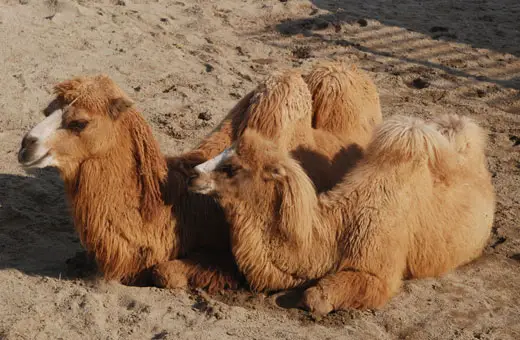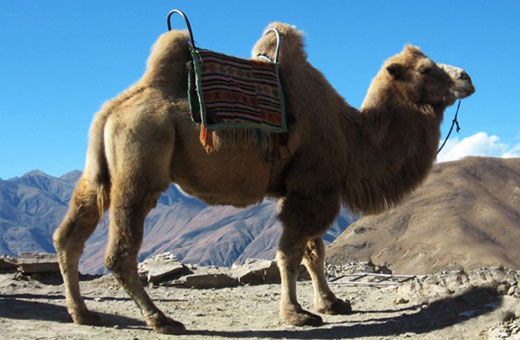Bactrian Camel
The Bactrian Camel is a true survivor, these ancient dual humped camels and survive for great periods without food or water and can even with stand nuclear radiation. Unfortunately the Bactrian Camel is now classed as critically endangered because although a true survivor the Bactrian Camel’s can not withstand human advancement, constant hunting and habitat loss which have led to a decreased Bactrian Camel population to around only 1000 surviving camels in China and Mongolia today.
The Bactrian Camel can be found in small numbers in southwest Mongolia and a handful of isolated areas in northeast China including Lake Lob, Arjin Shan and the Taklimikan Desert. In comparison to the very small number of wild Bactrian Camel it is believed that there are over 2 million domesticated Bactrian Camel currently spread across China and Mongolia.

Bactrian Camel's grazing
Out in the wild the Bactrian Camel’s are subject to extremely harsh conditions with very small amounts of water and shrubs available and extreme hot and cold seasons. Although the Bactrian Camel do tend to migrate they are limited to some degree by the availability of water. Water is not a problem in winter as the Bactrian Camel’s will obtain water from snow however in summer the Bactrian Camel’s will often be found at the bottom of mountain ranges as this is the best source of fresh water from mountain springs. After the rainy season Bactrian Camel’s will tend to congregate on river banks where water is easily available.
The Bactrian Camel is the picture most people imagine when thinking of the word ‘camel’ as it has the distinct dual humps. These survivalists have adapted expertly to life in the Gobi Desert where sandstorms can make life extremely difficult. The Bactrian Camel’s have adapted to protect themselves against sandstorms, the have a dual layer of eye lashes to protect their eyes, thick hair in their ears and also have the ability to close their nostrils. Other adaptations include wide spread feet to help traverse the desert land and the ability to quickly grow and shed fur which is extremely useful due to the harsh climate conditions.

A domesticated Bactrian Camel
Bactrian Camel’s are active during the daytime and feed mostly on grass and shrubbery however because food can be very rare they have also adapted to eat most dry shrubs and even thorny plants. Excess fat is stored in the humps of the camels which is the main reason camels can survive so long without food or water. As with food sources theBactrian Camel take what it can get and are able to drink alternate water sources such as slat water without any adverse effects.
Bactrian Camel’s usually travel in herds of between 5 – 20 camels and each herd is led by an adult male. The Bactrian Camel can live up to 40 years of age and come in to sexual maturity around the age of 5 producing its first offspring as early as 5 or 6 years old and then approximately every 2 years.


AHH THIS DUDEE IS SOOO CUTEEE :)
i need to know where the bactrian camel can be found…anyone know where?
The picture is very beautiful.